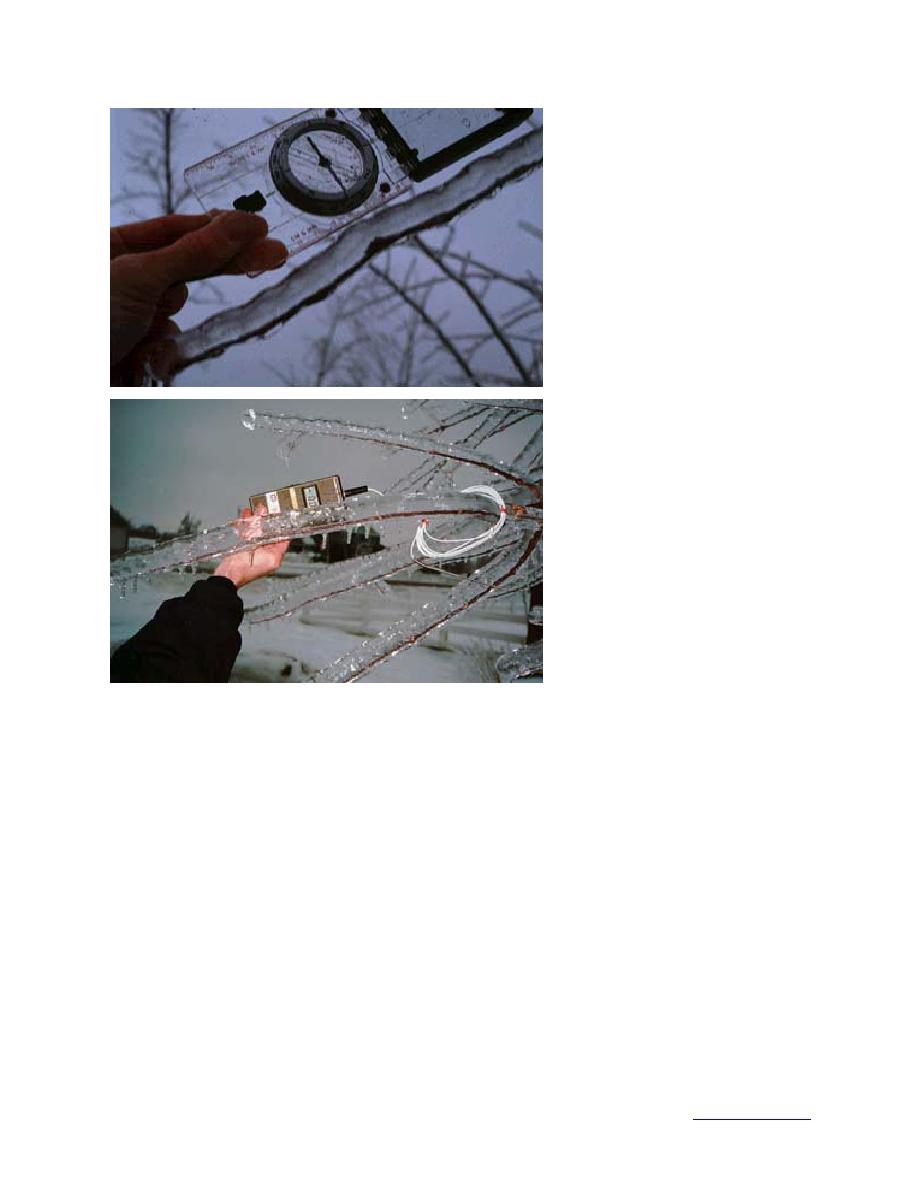
b. 0.2 in. at 100 ft in Swanton,
Vermont, at 8:50 a.m. on January
8 (photo Mulherin).
c. 0.7 in. at 110 ft near Rouses
Point at 9:20 a.m. on January 8
(photo Jones).
Figure 22 (cont'd). Ice accretions with measured or estimated uniform ice thickness.
(Jones and Ryerson, unpublished). With an average freezing-rain rate of 1 mm/hr in this storm,
and an assumed wind speed of 8 m/s at the summit of Cadillac Mountain (about 50% higher than
was measured at weather stations, to take topographic effects into account), we estimated a flux
of water from the supercooled cloud droplets that is about twice the flux of water from the freez-
ing rain. The mass of ice that accretes on an object from cloud droplets depends not only on the
flux of water, but also on the diameter of the droplets and the size of the object. Those factors,
along with the wind speed, determine the collision efficiency of the droplets with the structure
(Finstad et al. 1988). The accreted ice mass also depends on the density at which the ice accretes,
because that determines the size of the accretion, which feeds back into the collision efficiency.
The ice density is determined by the cloud liquid water content and air temperature as well as the
previously mentioned factors (Jones 1990). The additional flux of water from clouds in the cold-
air layer in this storm is likely to have been the major contributor to the accreted ice load on
mountaintops that were high enough to be in the low-level clouds throughout the storm and low
enough to be below the warm air layer. The contribution to the ice load on trees and structures
on the sides of mountains at these elevations would be less pronounced because of the decreased
topographic effect on wind speed.
33
Back to contents page




 Previous Page
Previous Page
